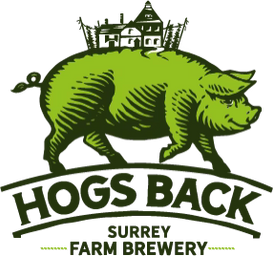Swarming Season for Hog’s Back Bees Starts Early
With the unusually high temperatures in early spring, the swarming season for the local bees that make Hog’s Back Honey has started early.
We caught up with beekeeper Astrid to find out more……

Q: How does the warm weather affect the bees?
A: The warm weather means there was an abundance of flowers from which the bees foraged pollen and nectar. The bee hives have been filled with nectar, which the bees turn into honey and many different colours of pollen which is protein food for the bee larvae.
When bee hives fill up fast because there is so much for the bees to forage, the space left for the queen to lay eggs can get compromised. This could be one of the reasons that a bee colony decides to swarm - they are running out of space so want to split the colony. That means that roughly half the colony takes off with their queen and the other half of the colony is left behind for them to raise new queens.
Q: As a beekeeper, how you can you help to prevent the bees swarming?
A: Beekeepers can help to prevent swarming by ensuring that the colonies continue to have enough space in the right place in the hives, just above the brood nest. All colonies need to be checked every week to ensure timely swarm prevention measures are taken.
Another reason when bees often decide to swarm is when they feel congested. This is often after a period of nice weather, when the colony is expanding, and then for a period of bad weather to arrive, so bees are not flying out and the bad weather makes inspections difficult or impossible - at that time swarming plans can get missed. At the first opportunity of nice weather after a period of bad weather, the bees can swarm.
Q: Why is it important to help prevent swarming?
A: When a colony has swarmed it often means that no honey will be available from that colony in that year as half the colony has gone and it will take at least 3 weeks for the bees left behind to get a new queen before she can start laying eggs to build up the colony again.
There is currently little foraging for bees available. We are waiting for the bramble and other summer flowers to start flowering and to produce nectar. It is what is called the 'June Gap', which this year has started early, due to the warmer weather. The bees are now tucking into their honey stores to survive on until the main nectar flow starts, hopefully soon.
We’ll catch up with Astrid again later in the season.
Hog’s Back Honey is on sale in the Brewery Shop.
To keep up to date with all the news from the Hogs Back Brewery, sign up to our newsletter below to get 10% off your first online beer order and follow us @HogsBackBrewery on X, Facebook and Instagram.

